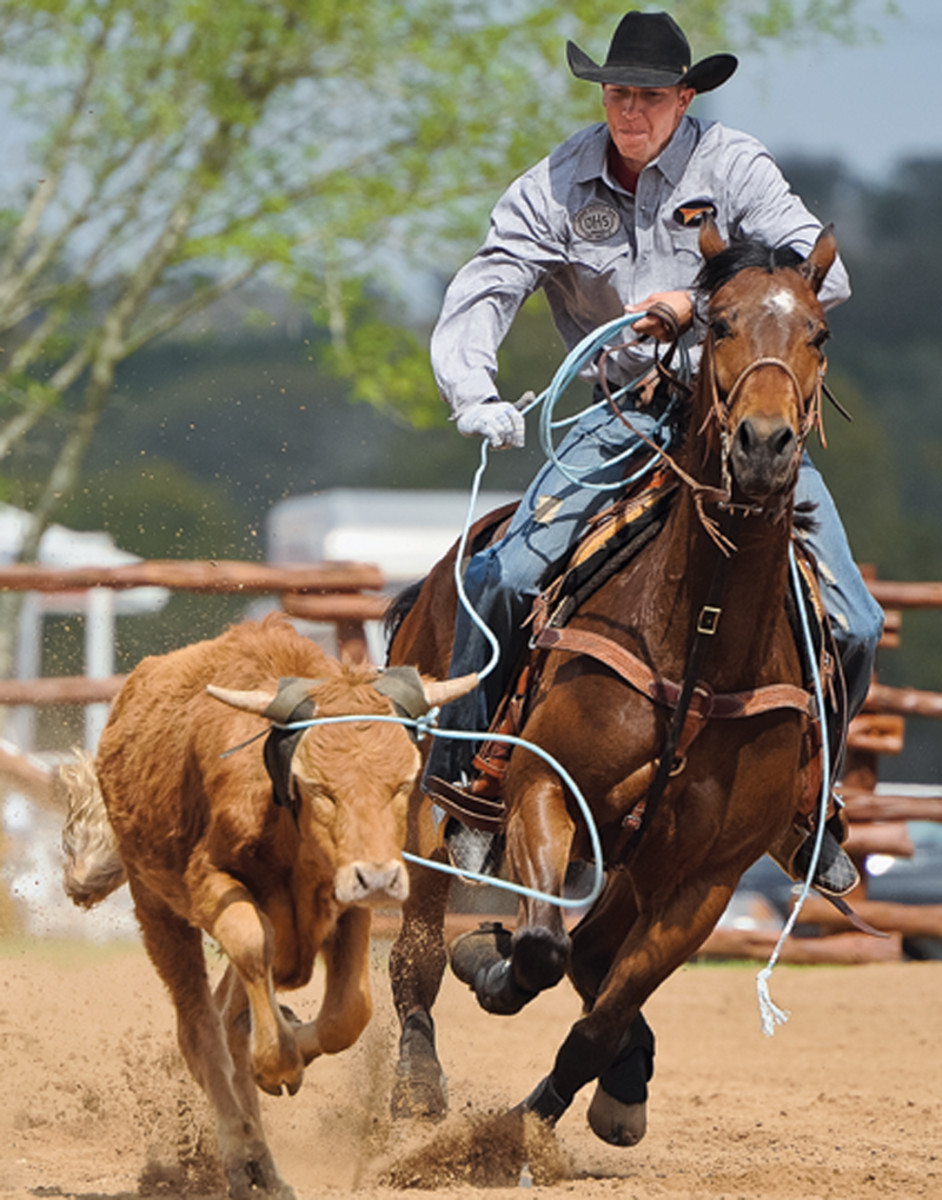THE Horse
When Brock Hanson of Casa Grande, Ariz., combined with 11-year-old RU Drifting Joe (“Stripper”) in 2012, he had the best season of his life. Heading for Ryan Motes, Hanson made his first NFR and earned $141,582, including a fourth-place finish at the Wrangler National Finals Rodeo.

Stripper is so versatile that Hanson and Motes tied the world record at 3.3 seconds—and won money over the long scores of Cheyenne Frontier Days and the California Rodeo in Salinas. Hanson, 28, bought Stripper from veteran rope-horse trainer and broker Ray Siggins.
THE PROBLEM
Stripper wasn’t lame. But in February, he wasn’t himself.
“I ran three steers where he acted really strange,” Hanson said. “He didn’t want to score, and that horse always scores. On the next one, he really didn’t run hard. And on the third one, he wouldn’t turn off. He just didn’t work. It was real weird. I knew something was wrong.”
Ray’s wife, Susan Siggins, happened to be on her way to the Turf Paradise branch of Equine Sports Medicine & Surgery from her place in Coolidge, Ariz., so she took Stripper along. Dr. Tom Hutchins found injured suspensory ligaments in both front legs.
“Horses that try that hard just tear themselves up,” said a dejected Hanson. “The problem was that he was so tough he wouldn’t show the pain—or we could have caught it earlier.”
THE SOLUTION
Hanson left Stripper with Siggins, who has years of experience rehabilitating racehorses and barrel horses.
“He had what could have been a career-ending injury,” she said. “Veterinarians at ESMS did platelet-rich plasma (PRP) therapy in March and a couple of sessions of shock wave therapy. In April, the ultrasound looked good but there was still damage in the right suspensory. So they shock-waved him again.”
“Shock waves” are waves of extremely high-pressure ultrasound that were first used to shatter human kidney and bladder stones. Later they were found handy in treating stubborn fractures and inflammation where tendons or ligaments attach to bone (like tennis elbow). Their purpose is to speed healing.
According to Dr. Scott McClure of Iowa State University, a pioneer of equine shock-wave therapy, the technology has helped improve navicular horses and those with hock spavin, but is particularly successful with suspensory tears. Two to three treatments are standard and cost anywhere from $200 to $800. A treatment doesn’t take long, and is administered on an outpatient basis much like an ultrasound.
“Each lesion is an individual injury, so the treatment protocol does vary,” he said. “You might use shock wave on one and PRP or stem cells on another. But since we started shock-waving horses in the late 1990s, suspensory lesions have responded fairly consistently.”
Then in August, Siggins bumped into someone who offered to give Stripper treatments with pulsed electro-magnetic field (PEMF) leg wraps.
Dr. McClure says that the effectiveness of PEMF technology hasn’t been supported by research over the 40 or 50 years that it’s been around. But it remains one of the latest fads of performance-horse owners for its manufacturers’ claims that it increases circulation and reduces inflammation. Siggins was sold.
“After 10 sessions, various little puffy spots that I could never ice down went almost completely away,” she said. “It was amazing and it made a believer out of me. We took Stripper back to the vet for an ultrasound toward the end of summer and he couldn’t even believe it.”
After sending Stripper to swim for 30 days in the Tucson Equestrian Center’s AquaStride hydrotherapy pool (where Cesar de la Cruz conditions his horses), she sent him back to Hanson at 100 percent in October.
“I think what we did with the horse healed him in half the time it would have taken with traditional therapy,” Siggins said. “Between ESMS vets Dr. Marty Ivey and Dr. Tom Hutchins and the PEMF treatments, it was a team effort with that horse.”
Dr. Ivey added that ligament injuries “heal with scar tissue, so the rehabilitation plan is almost as important as treatment and healing.” To that end, Siggins reminded Hanson not to stop with the cold therapy and sweat wraps she’d been administering daily.
“If these team ropers would put ice boots on their horse’s front legs when they load their horse after the rodeo; then stop on the road and pull them off after 30 minutes or so–and even consider using a liniment or poultice at night–it might really help maintain suspensory health,” she said.
No doubt Hanson will be happy to get himself a pair of ice boots in light of the bad luck he had in 2013.
“It was a tough year,” said Hanson. “I had leased another really nice horse that got injured in January. Then Stripper went down. I had a really nice young one that got sore, and I had another big roan horse that came up injured right after Stripper.”










